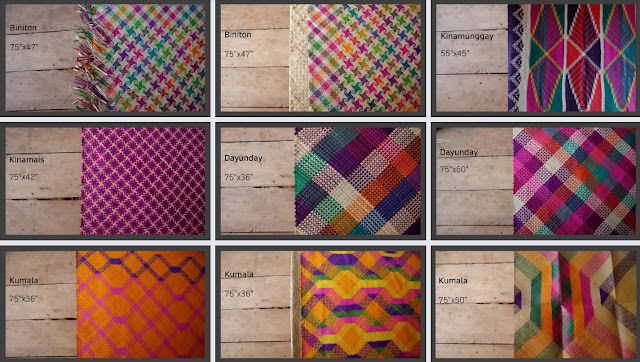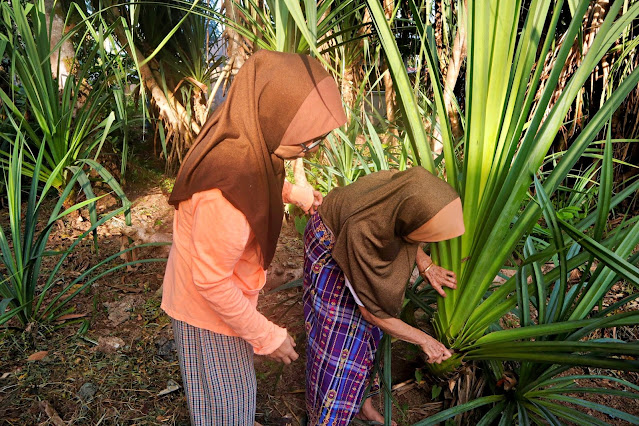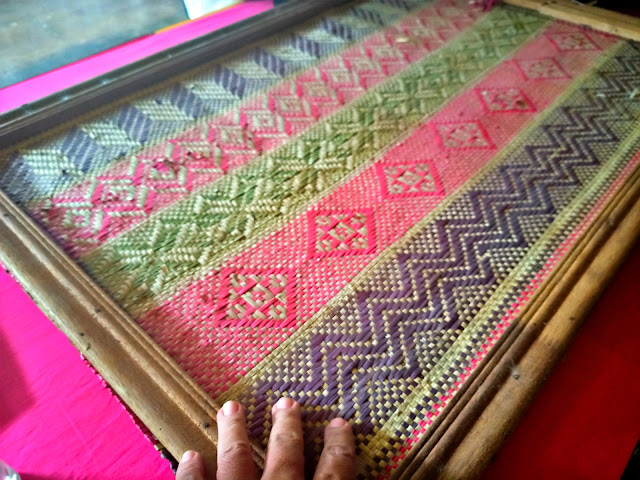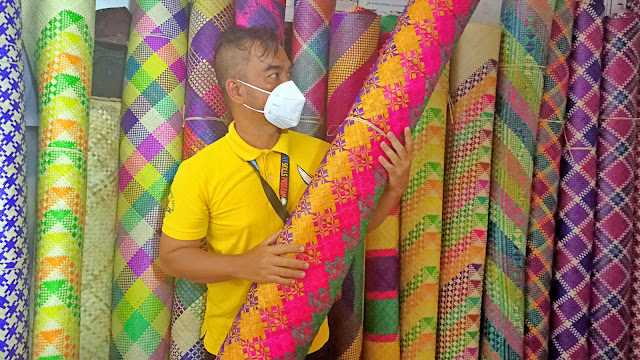As someone who grew up in the 1980’s, I’ve had my experiences of sleeping on a banig (a traditional handwoven mat in the Philippines) especially during naptime after school or when we would visit and spend a night at my grandmother’s old house in Bulacan. Dozing off on one isn’t the most comfortable but with a soft pillow and a burst of fresh air coming from the open windows, you’ll be eventually lulled into a relaxed sleep.
I can still vividly remember the design of our banig my mom used to keep rolled up behind the door of my parent’s room. It was white lined with several patterns of red forming a crown in the middle. I thought its design was intricate enough until I discovered more banig creations from other parts of the Philippines like in Basey, Samar.
The artistry involved in weaving banig mats is no different from the art of woven cloth when it comes to the complicated process and ingenuity involved in coming up with designs and patterns of each creation. Depending on the region where the banig is created, the main material varies. For example, in Basey, Samar, their woven banig are made from buri, a palm genus. In Kumalarang, their handwoven mats are made from pandan leaves.
During our trip to Zamboanga Peninsula, we visited a community of banig weavers in the town of Kumalarang, Zamboanga del Sur called the Kumala Weavers.
As part of Tourism Promotions Board of the Philippines' ‘Habi’ (weaving), ‘Hilom’ (wellness) and ‘Halal’ (cuisine) exploration of the ZamPen region, our pit stop at Kumalarang was meant for us to discover the community’s living tradition. The Kumala weavers carries a century-old practice of mat weaving even after the death of their Master Weaver Hadja Sittie Mariam in 2020.
Now headed by Mariam’s daughter Sarifa Dakula and with the help of a School of Living Tradition established in late 2000’s by the National Commission for Culture and the Arts (NCCA), the Kumala Weavers’ unique style of banig weaving lives on.
History
and Culture on a Banig
What makes their 'banig' creations exceptional was the incorporation of their culture and history in the designs and patterns. For example, one of the mother weavers showed us a banig with a design called “Magiranon sa Sulu”.
She explained to us its significance. "Look at these five columns. Each one represents a part of our heritage. The upper column symbolizes the river, while the next ones are the three tribes of Maguindanaoans, Maranaos and the Tausugs. The last column depicts the mountain", she tells us in Tagalog.
She then pointed other sets of banig with various designs such as the “biniton”, the “andun”, which is a favorite design of members of the royal families before, “bagwa masa”, symbolizing the new generation and the “mantapunay”, or a bird.
In a sense, the traditional banig designs are illustration of their way of life, past and present rulers, surrounding environment to everyday objects.
A
Conversation over a Feast of Dulang
After giving us a tour of their banig weaving center and the School of Living Tradition, the mother weavers invited us for a lunch of Dulang. The Dulang is a set of meal consisting of traditional dishes served during special occasions. “Since we treat your visit as a special occasion, we prepared some dulang food for all of you” one of them told us in Tagalog.
While enjoying the food they prepared for us, Nanay Sarifa shared to us that she often gets invited to trade exhibitions in Manila to demonstrate banig weaving. The last time she did was in 2019 just before the pandemic. “I miss it so much” she tells us.
Apart from having the opportunity to share their creative banig weaving tradition, Nanay Sarifa told us that her heart beams with pride whenever foreign participants of trade fairs would rave about their banig creations and purchase in bulk as presents to their families and friends in their respective countries.
While it is unfortunate that we never get to meet the late Master Weaver Hadja Sittie, it is wonderful to rest on the knowledge that her legacy lives on through her children and the other mat weavers of Kumalarang.
Sarifa told us that she made her first banig at age five under the guidance of her late mother. From those early memories of learning to weave and to harnessing her skills to be able to create complicated designs, the journey as she described it was "long and difficult". Despite of it all, the reward for continuing on her mother's legacy is a fulfilling one. "Now, are Kumala mats are internationally recognized", she tells us proudly.
I'm sure somewhere up there in the heavens, Master Weaver Hadja Sittie is feeling proud as well.
Photos # 2 and 3 by Kumala Weavers Facebook Page

































